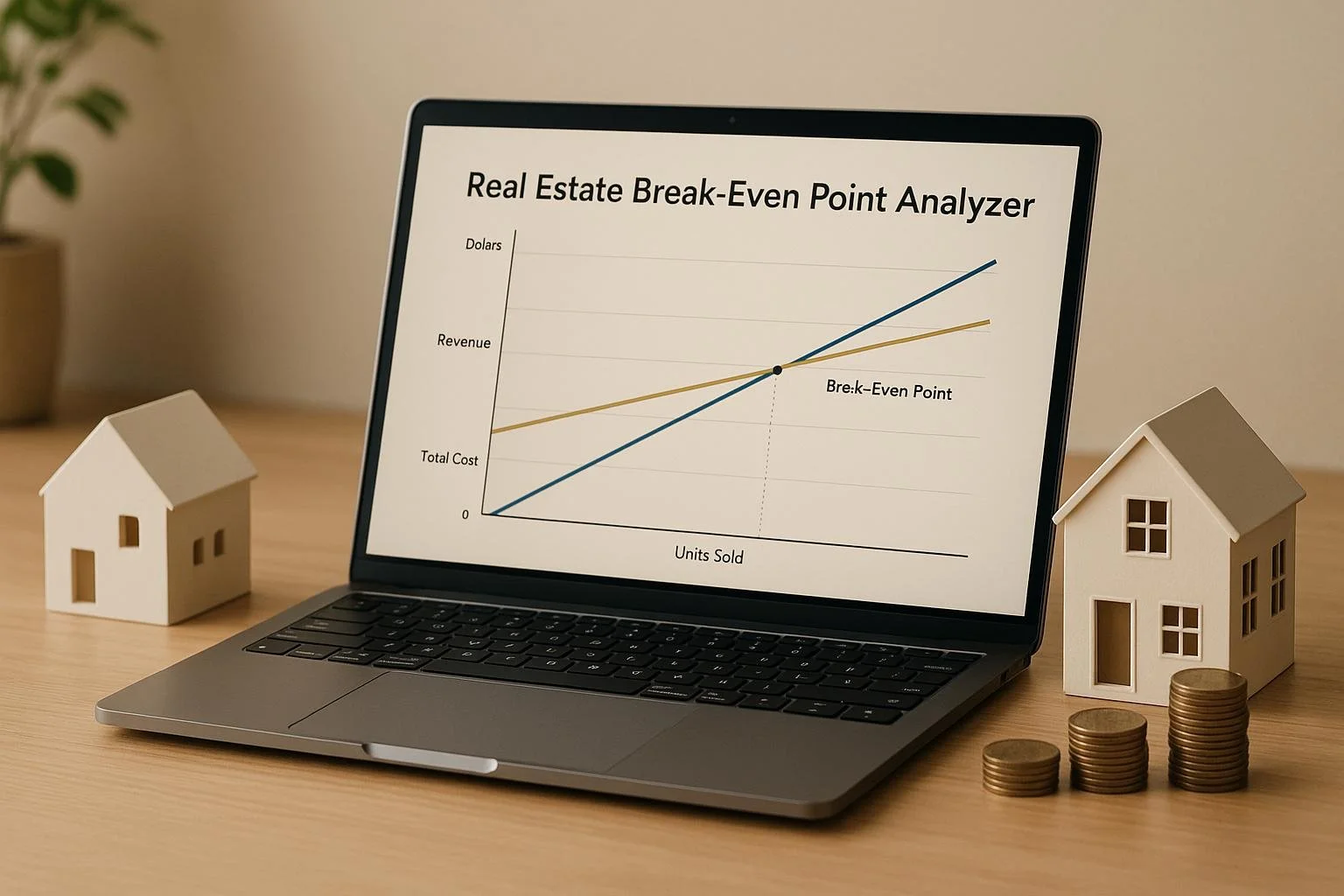Real Estate Break-Even Point Analyzer
Unlock Your Real Estate Investment Potential
Investing in property can feel like a leap of faith, but understanding when you’ll recover your costs makes all the difference. That’s where a tool like our Real Estate Break-Even Point Analyzer comes in. It’s designed to help both new and seasoned investors figure out how long it’ll take to balance the books on a rental or flip property. No complicated spreadsheets—just straightforward math based on your total investment and monthly earnings.
Why Timing Matters in Property Investments
Knowing the timeline to recoup your initial outlay isn’t just about numbers; it’s about strategy. Whether you’re eyeing a fixer-upper or a steady rental, having a clear picture of your financial horizon lets you make smarter decisions. Maybe you’re weighing multiple properties or deciding whether to hold or sell. A quick calculation of your investment recovery period can guide you toward the most profitable path without the guesswork.
Plan Smarter, Invest Better
Beyond crunching numbers, this kind of insight helps you manage risk and set realistic goals. Pair it with market research, and you’ve got a powerful way to navigate the ups and downs of real estate. Curious about your own property’s timeline? Plug in your figures today and see where you stand.
FAQs
What exactly is a break-even point in real estate?
Great question! The break-even point is the moment when your property investment starts to pay for itself. Basically, it’s how long it takes for your total income from the property (like rent) to equal the amount you initially spent on it. Our tool calculates this in months by dividing your total cost by your monthly net income. It’s a handy way to gauge when you’ll stop being in the red and start seeing returns.
What if my monthly net income varies over time?
That’s a real concern for many investors, since income from a property isn’t always steady. This tool uses the monthly net income you provide as a constant to give you a baseline estimate. If your income fluctuates a lot, try running the numbers with an average or a conservative figure to get a realistic range. It’s not perfect for every scenario, but it’ll give you a solid starting point to work from.
Does this tool account for taxes or maintenance costs?
Not directly, and here’s why: we keep things simple by focusing on your net income after expenses. When you enter your monthly net income, make sure it’s the amount left over after you’ve paid for things like taxes, maintenance, or mortgage interest. That way, the break-even calculation reflects your actual cash flow. If you’re unsure about those numbers, it might help to chat with a financial advisor for a deeper dive.

